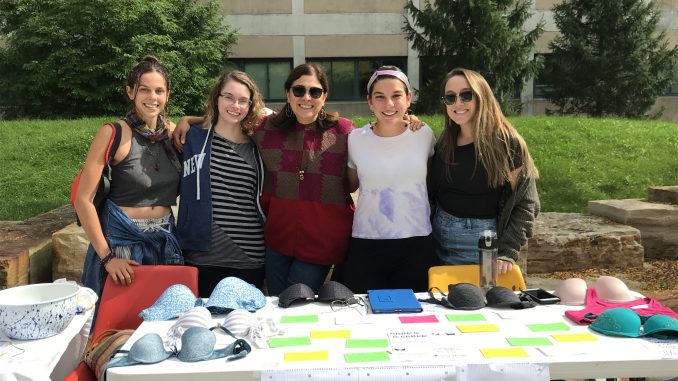
In 2016, Spanish Professor Luz Porras teamed up with Vida Real, a church in the city of Kingston where she wished to implement English classes for the local immigrant community. Porras needed to get volunteers to teach and help the church with local drives and other services to get started.
Porras didn’t need to look further than SUNY New Paltz, when then third-year student Samantha Klein approached Porras to ask if there were any volunteering or internship opportunities to improve her Spanish speaking skills outside of the classroom. This opportune moment kick-started ENL classes for local migrants.
At the time, the group entirely consisted of student volunteers who dedicated their Saturday mornings to prepare materials and lesson plans for the immigrant community.
“We made a conscious effort to personalize and cater each lesson to their interests and immediate needs, said Klein, who graduated in 2018. “The lessons included vocabulary for doctor visits or sample forms they may need to fill out for their children or themselves.”
While the program has had drawbacks because of conflicting times and Porras creating more community-based learning opportunities, it will continue its mission of inclusion and recognition of immigrant communities because students are now required to participate in her Communications and Culture class.
The service-learning program will start once again on Oct. 20 and will continue every Saturday until Nov. 17.
Just as Porras found volunteers in her students, she also found help from the administration. Last May, the Dean of Liberal Arts and Sciences wanted to incorporate experiential or hands-on curriculum to courses. Porras then re-adjusted her syllabus to implement the service-learning program in Kingston into the class, which bridged the gap between curriculum and the community.
“It’s hard to learn a new language, you need opportunities like this to access those Spanish speaking places to practice, and you don’t need to look further than your community,” Porras said.
The service-learning program will account for 20 percent of the student’s grade. Native Spanish speakers will give their time teaching beginner Spanish to indigenous residents, such as indigenous Guatemalans who speak Q’eqchi. Students who are less fluent in Spanish will teach English.
Beside language lessons, other community efforts include enrolling the children of the participants into local public schools, helping them fill out lengthy paperwork and organizing coat and bra drives for local shelters.
“We emphasize the point of ‘no white saviors’,” Porras said. “We don’t go to tell them what to do with their lives, we’re there to collaborate with them, we learn from them as much as they learn from us.”
Porras explained that their main mission is to not simply teach, but to break down barriers between citizens and immigrants.
“Our goal is to make them feel like they are not alone,” Porras said. “We want to take away that feeling of isolation and give their presence recognition.”
Klein’s efforts in community service did not stop after she graduated. She is now a program coordinator of a two-year teen leadership fellowship in New York City called YouthBridge-NY. The fellowship convenes diverse high school students to meet and build leadership and community organizing skills.
“The volunteer group in Kingston taught me that there is a need for building positive community relations, and we can only do that by learning from each other and working together,” Klein said.
